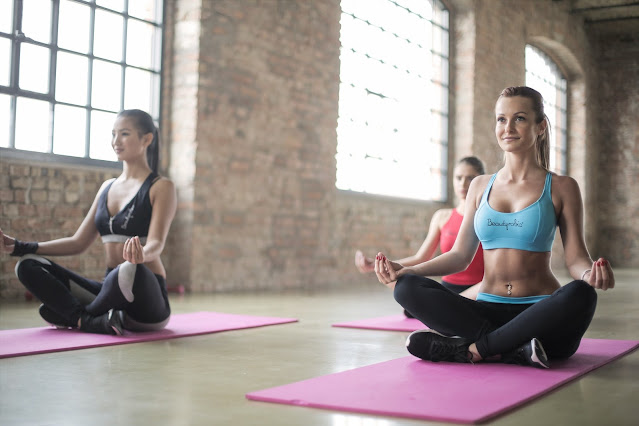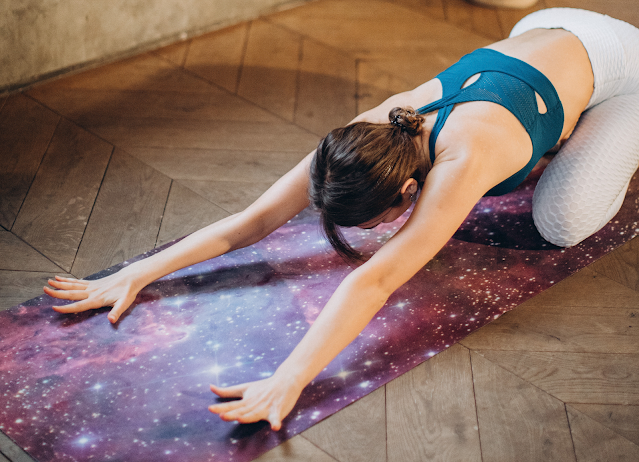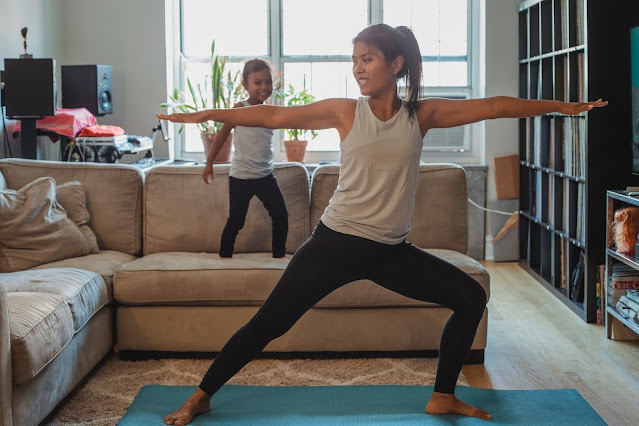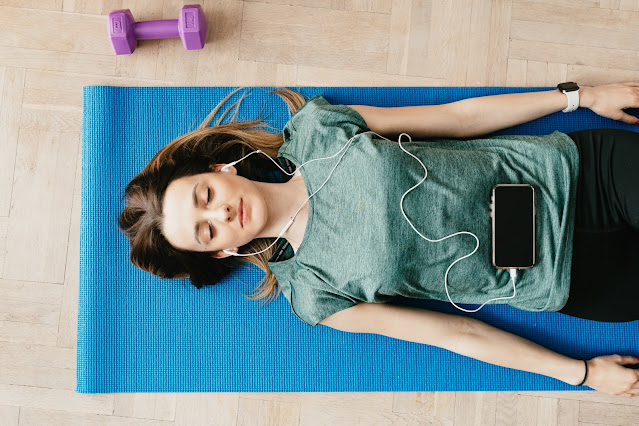Yoga For Stress And Depression
Yoga Exercises For Stress And Depression
There are several yoga exercises that can be used to reduce stress and depression. These include:
- Child's Pose - This pose helps to calm the mind and release tension in the back, shoulders, and hips. It also promotes feelings of safety and security.
- Downward-Facing Dog - This pose helps to release tension in the shoulders and neck, and can also help to improve mood and reduce feelings of stress and anxiety.
- Warrior Pose - This pose helps to improve self-esteem, increase energy and reduce feelings of depression.
- Extended Triangle Pose - This pose helps to improve self-esteem, release tension in the shoulders, and improve the balance of the body.
- Tree Pose - This pose helps to improve focus and concentration, reduce anxiety, and promote feelings of stability and grounding.
- Seated Forward Bend - This pose helps to release tension in the back and shoulders, and can help to reduce feelings of stress and anxiety.
- Corpse Pose - This pose helps to promote relaxation and release tension in the body, which can be helpful for reducing symptoms of depression and anxiety.
- Alternate Nostril Breathing - This pranayama helps to balance the nervous system and reduce feelings of stress and anxiety.
Yoga For Stress And Depression - Child Pose
The Child's Pose, or Balasana in Sanskrit, is a yoga posture that is often used to calm the mind and release tension in the back, shoulders, and hips. The pose is typically done by starting on hands and knees with the wrists under the shoulders and the knees under the hips. The person then sits back on the heels and reaches the arms forward, resting the forehead on the mat.
Benefits:
Some benefits of the Child's Pose include:
- Calming the mind and promoting relaxation
- Stretching the back, hips, thighs and ankles
- Reducing back and shoulder tension and stress
- Improving digestion
- Promoting feelings of safety and security
It's important to note that people with knee injuries should avoid this pose or use props to support the knee. Also, people with ankle injuries should be careful when sitting back on their heels.
It is a pose that is suitable for all levels, and can be modified to suit individual needs. It can be held for several minutes and can be a great way to start or end a yoga practice, or as a way to take a break during the day to release tension and stress.
Image by nikitabuida on FreepikYoga For Stress And Depression - Downward-Facing Dog Pose
The Downward-Facing Dog, or Adho Mukha Svanasana in Sanskrit, is a yoga posture that is often used to release tension in the shoulders and neck, and improve mood. The pose is typically done by starting on hands and knees, then lifting the hips up and back, straightening the arms and legs, and coming into an inverted "V" shape. The head hangs down and the heels press towards the floor.
Benefits:
Some benefits of the Downward-Facing Dog include:
- Stretching the entire back of the body, including the spine, shoulders, and hamstrings
- Strengthening the arms, legs and core
- Improving digestion
- Calming the mind and reduce the feelings of stress and anxiety
- Improving circulation and energizing the body
It's important to note that people with wrist or shoulder injuries should be careful when doing this pose, and may need to use props such as blocks or straps to support the wrists. Also, people with high blood pressure, should come out of the pose if they feel dizzy.
It is a versatile pose that can be used in a variety of ways in a yoga practice, such as a transition between other poses, as a resting pose, or as a standalone pose. It can be held for several minutes at a time, and can be modified to suit individual needs.
Yoga For Stress And Depression - Warrior Pose
Warrior Pose, or Virabhadrasana in Sanskrit, is a yoga posture that is often used to improve self-esteem and energy, as well as reduce feelings of depression.
There are three variations of Warrior Pose, each one targeting different areas of the body and having slightly different benefits.
Warrior I (Virabhadrasana I): This variation targets the legs, hips, and chest. It helps to strengthen the legs and open the chest, promoting feelings of confidence and courage.
Warrior II (Virabhadrasana II): This variation targets the legs, hips, and shoulders.It helps to improve balance, open the hips and strengthen the legs. It is also said to be energizing and grounding, promoting feelings of stability and focus.
Image by yanalya on FreepikWarrior III (Virabhadrasana III): This variation targets the legs, core, and balance. It helps to strengthen the legs, core and improve balance. Furthermore, It helps to develop focus and concentration.
Benefits:
Some common benefits of the Warrior Pose include:
- Strengthening the legs and core
- Improving balance and stability
- Opening the chest and shoulders
- Improving focus and concentration
- Reducing feelings of depression and anxiety
It's important to note that people with knee or ankle injuries should be careful when doing this pose and may need to use props such as blocks or straps to support the joints. Also, people with high blood pressure, should come out of the pose if they feel dizzy.
Warrior Pose is a powerful pose that can be used to build strength and confidence. It is typically held for several breaths and can be repeated several times on each side. It is suitable for most levels and can be modified to suit individual needs.
Yoga For Stress And Depression - Extended Triangle Pose
The Extended Triangle Pose, or Utthita Trikonasana in Sanskrit, is a yoga posture that helps to stretch the legs, torso and arms, as well as to improve balance and stability. The pose is typically done by standing and then step the feet wide apart, one foot facing forward, and the other foot facing out to the side. The person then extends the arm on the same side as the forward-facing foot and reaches it towards the front, while the other arm reaches up towards the sky. The body is then leaned over to the side, with the hand on the front foot and the back leg straight.
Benefits:
Some benefits of the Extended Triangle Pose include:
- Stretching the legs, hips, torso, shoulders, and arms
- Strengthening the legs and core
- Improving balance and stability
- Improving digestion
- Improving self-esteem
- Reducing stress and tension in the back and shoulders
It's important to note that people with high blood pressure, neck or back injuries should be careful when doing this pose and may need to use props such as blocks or straps to support the joints. Also, people with knee injuries should avoid this pose or use props to support the knee.
Extended Triangle Pose is a great way to stretch the sides of the body and to improve balance. It is typically held for several breaths and can be repeated several times on each side. It is suitable for most levels and can be modified to suit individual needs.
Yoga For Stress And Depression - Tree Pose
The Tree Pose, or Vrikshasana in Sanskrit, is a yoga posture that helps to improve focus and concentration, reduce anxiety, and promote feelings of stability and grounding. The pose is typically done by standing on one leg, grounding the foot and then bringing the sole of the other foot to rest on the inner thigh of the standing leg. The hands are then brought together in front of the chest in prayer position.
Benefits:
Some benefits of the Tree Pose include:
- Improving balance and stability
- Strengthening the legs and core
- Improving focus and concentration
- Reducing anxiety and promoting feelings of calm
- Improving posture and alignment
- Improving digestion
It's important to note that people with knee or ankle injuries should be careful when doing this pose, and may need to use props such as blocks or straps to support the joints. Also, people with high blood pressure should come out of the pose if they feel dizzy.
Tree Pose is a great way to improve balance and focus. It is typically held for several breaths and can be repeated several times on each side.
It is suitable for most levels and can be modified to suit individual needs. It can be a good pose to practice when feeling anxious or stressed, as it helps to bring a sense of grounding and stability.
Yoga For Stress And Depression - Seated Forward Bend Pose
The Seated Forward Bend, or Paschimottanasana in Sanskrit, is a yoga posture that helps to release tension in the back and shoulders, and can help to reduce feelings of stress and anxiety. The pose is typically done by sitting on the mat with the legs stretched out in front, then bend forward from the hips, reaching towards the toes, or as far as the flexibility allows, keeping the back straight. The hands can be used to hold onto the toes, or to the legs or ankles, or even to rest on the knees.
Benefits:
Some benefits of the Seated Forward Bend include:
- Stretching the back and legs
- Relaxing the back, shoulders, and neck to ease strain and tension.
- Improving digestion
- Calming the mind and promoting feelings of tranquility
- Improving flexibility in the spine and hamstrings
It's important to note that people with back injuries should be careful when doing this pose, and may need to use props such as blocks or straps to support the back. Also, people with high blood pressure should come out of the pose if they feel dizzy, and people with knee injuries should avoid this pose or use props to support the knee.
Seated Forward Bend is a great way to stretch the back and legs. It is typically held for several breaths and can be repeated several times.
It is suitable for most levels and can be modified to suit individual needs. It can be a good pose to practice when feeling stressed or anxious, as it helps to release tension and promote feelings of calm.
Yoga For Stress And Depression - Corpse Pose
The Corpse Pose, or Savasana in Sanskrit, is a yoga posture that helps to promote relaxation and release tension in the body, which can be helpful for reducing symptoms of depression and anxiety. The pose is typically done by lying down on the back, with the feet hip-width apart and the arms resting at the sides. The eyes are closed and the breath is deepened and slowed down.
Benefits:
Some benefits of the Corpse Pose include:
- Calming the mind and promoting feelings of relaxation
- Reducing stress and tension in the body
- Improving sleep
- Lowering blood pressure and heart rate
- Improving the ability to focus
It's important to note that people with back injuries should be careful when doing this pose and may need to use props such as blocks or pillows to support the back. It is also important to find a comfortable position, to avoid any discomfort during the practice.
Corpse Pose is considered to be the most important pose in yoga and is often used at the end of a yoga practice to help integrate the benefits of the other poses and to allow the body and mind to fully relax.
It is typically held for several minutes and can be modified to suit individual needs. This pose can be a great way to end a yoga practice or a busy day, to release tension and promote feelings of peace and relaxation.
Yoga For Stress And Depression - Alternate Nostril Breathing Pose
Alternate Nostril Breathing, or Nadi Shodhana in Sanskrit, is a pranayama technique that helps to balance the nervous system and reduce feelings of stress and anxiety. It is done by sitting in a comfortable seated position, then using the right hand, the person uses the thumb to close the right nostril and inhale through the left nostril. Then, use the ring finger to close the left nostril and exhale through the right nostril. This process is then repeated by inhaling through the right nostril and exhaling through the left nostril.
Benefits:
Some benefits of Alternate Nostril Breathing include:
- Calming down the thoughts and lowering tension and anxiety
- Balancing the nervous system
- Improving respiratory function
- Enhancing focus and concentration
- Improving sleep
It's important to note that people with high blood pressure should practice this technique with caution and come out of the pose if they feel dizzy. Also, people with sinus infections should avoid this pose.
Alternate Nostril Breathing is a simple yet powerful pranayama technique that can be incorporated into a yoga practice or used on its own as a way to manage stress and anxiety.
It is typically held for several minutes and can be modified to suit individual needs. It can be a great way to begin a yoga practice or to use as a quick break during the day to release tension and promote feelings of calm.












Post a Comment